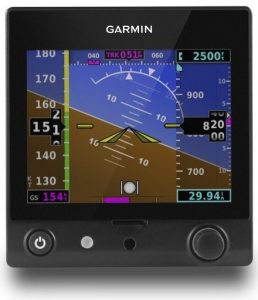The In’s and Out’s of ICA’s
With the average age of general aviation aircraft increasing, there are few (if any) aircraft out there that are truly factory-original. In fact, many systems and modifications being installed on aircraft these days were never even dreamed of when most general aviation aircraft were initially manufactured. You could have two aircraft that are the exact same make, model and year, but are set up completely different from one another.
With so much variation between aircraft, how do you know what to do to keep all of it’s various systems and modifications working as advertised? That is where ICA’s come in.
Many upgrades and systems come with Instructions for Continued Airworthiness, better known as ICA’s. Each ICA gives a description of the system in question, basic operational and maintenance instructions. Every aircraft has it’s own unique list of ICA’s to match it’s own unique set of equipment. Some systems have very brief and simple ICA’s, while others are much more involved.
You might look through your ICA’s and ask yourself, “Do I really need to do all of the checks and inspections listed here?”
In many cases, the answer is technically no; it depends on how critical the system is to the aircraft’s overall operation and whether the inspections in question are considered mandatory or optional. However, if you don’t do at least the mandatory ICA’s, the system will no longer be considered serviceable, which can cause some problems for you. We’ll illustrate some of the key points with two different examples below.
The Aircraft Component Inc’s Voice Alert system gives voice warnings whenever the aircraft’s stall warning system or gear warning system is activated. This is a supplement – not a replacement – for your aircraft’s existing stall and (if applicable) gear warning systems. The latest version of the ICA’s state that during your 100hr/annual inspection or whenever a malfunction is suspected, the operation of the system must be checked and both the wiring and mounting of the device must be inspected.
The Aspen’s EFD 500/1000 system ICA’s are a bit more involved as the EFD is a more advanced system; they have a list of both mandatory and recommended maintenance procedures. They say you must inspect and test the backup battery and autopilot disconnect (if applicable) every 12 months. The backup battery must be replaced every 3 years (or after 2200hrs of operation, whichever comes first). They also say you should inspect all components and wiring for damage or deficiencies annually.
The Voice Alert system is a quality-of-life device. Your aircraft’s factory stall and gear warning systems should still function normally without it, so skipping the inspections and losing the Voice Alert wouldn’t affect your overall airworthiness. However, what was be the point of getting the system installed if you can no longer use it?
On the other hand, Aspen EFD’s are often used as a primary altitude, airspeed and heading source, and are also interfaced to many other various avionics from GPS’s to autopilots which depend on it to operate normally. If your Aspen was no longer serviceable, your aircraft would be severely limited at best, or outright crippled at worst.
But what about optional inspections, which should be done? What happens if you elect to skip those?
If you decide to skip them the system will still be considered serviceable. Many of them are recommended because they’re valuable preventative maintenance aimed to identify and repair common issues before they develop into failures. There’s nothing more frustrating than running into problems with your aircraft – especially if it means having to cancel a flight – only to find out the root cause could have been found and repaired much sooner by an optional check.
Depending on how complex your aircraft is, there may be quite a few ICA’s associated with it, and the list of tasks can look rather intimidating. How much extra are these going to cost you?
While exact numbers are beyond the scope of this article, there is a great deal of variation in costs depending on the ICA in question and the specific aircraft. Some procedures are very similar or identical to checks already required by the aircraft’s maintenance manual, meaning there may not even be additional costs. Some others are much more specific, involved, and/or require access to difficult-to-reach areas in the aircraft, which can be where additional charges start to add up.
Ultimately, the decision on whether or not to have the inspections and tests listed in your ICA’s performed is up to you. We at Brant Aero will be happy to assist you in making informed decisions. Using both the latest available manufacturer’s information and our 46 years of expertise, we can help you avoid nasty surprises and get many more years of safe, reliable operation from your aircraft.
If you have questions about ICAs or other aircraft maintenance procedures, contact Brant Aero!
Author Profile: Dan Edwards graduated from Canadore College in 2008, and started working at Brant Aero in August 2010. He specializes in Bose repairs, ELT re-certifications and radio repairs.


